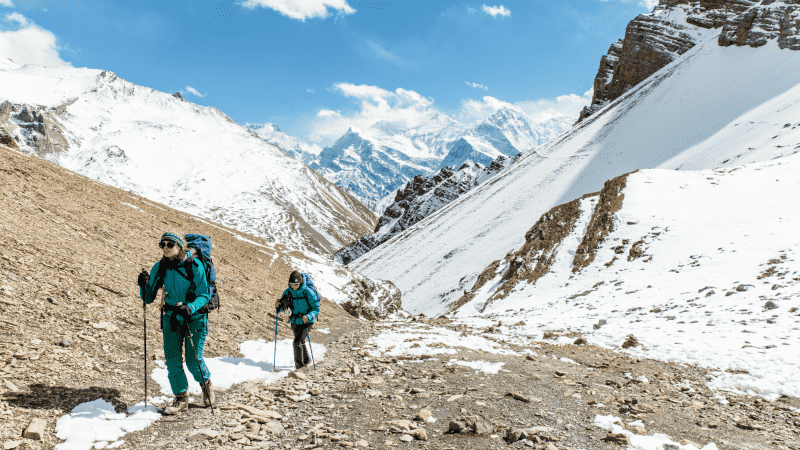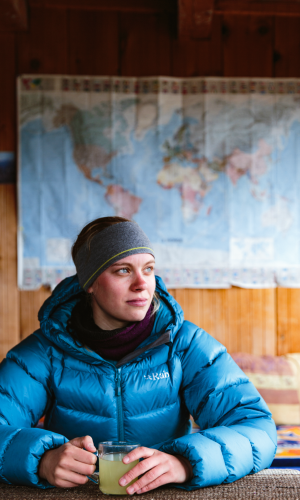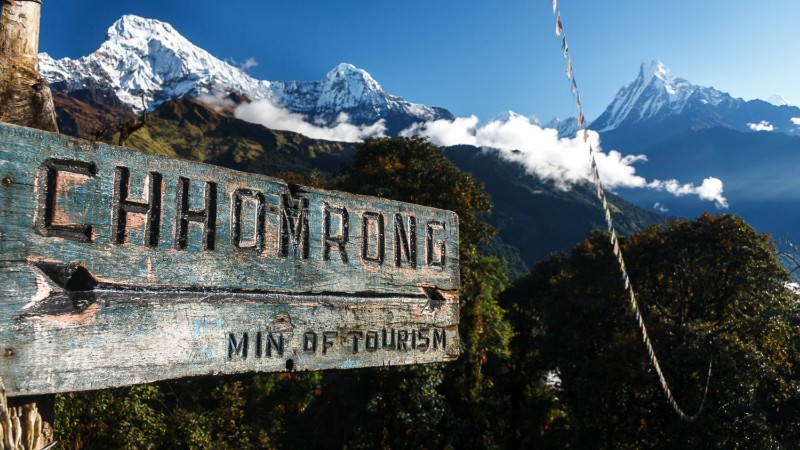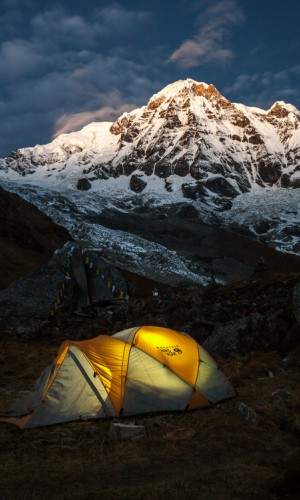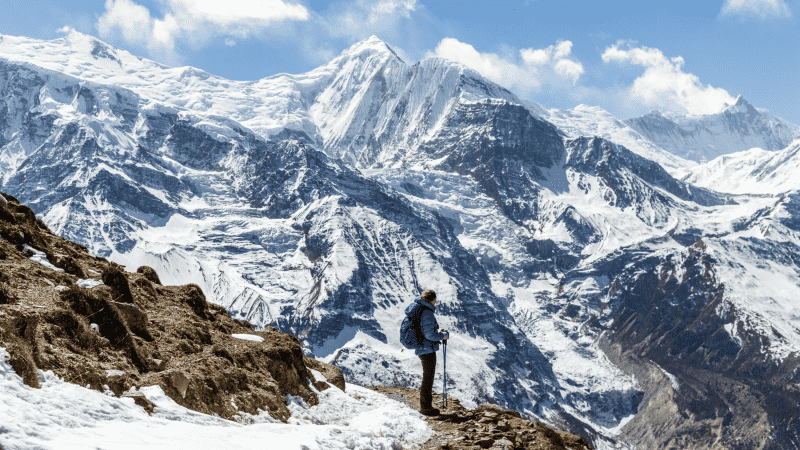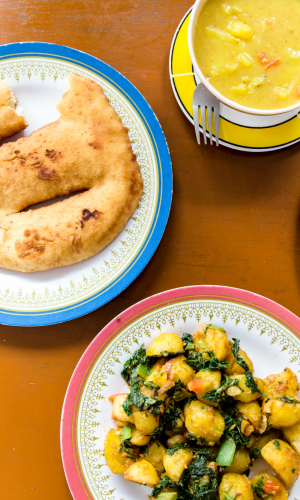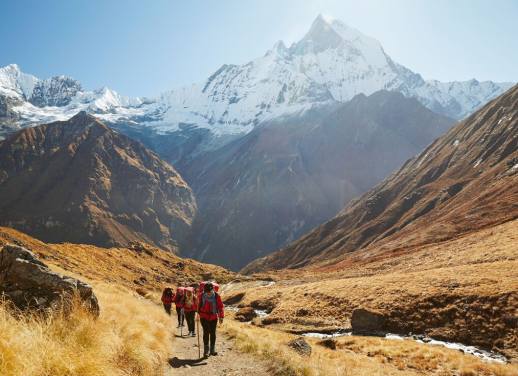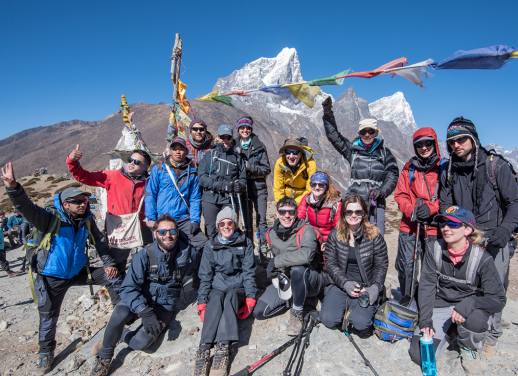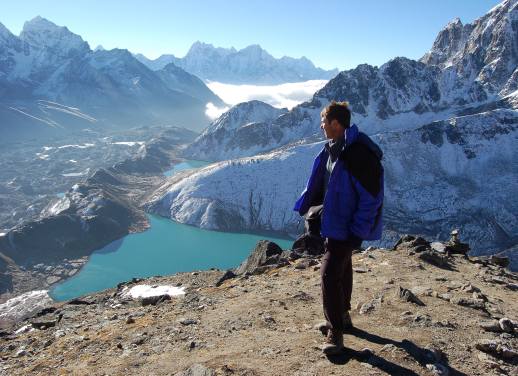Nepal is a bucket list country for so many reasons. From the great sweeping Himalayan range to the culture and villages of the foothills and vibrant traveller scene in Kathmandu and Pokhara.
But if you are heading to Nepal, it’s most likely because you’ve dreamed about a trek through one of the world’s highest mountain ranges. Everest Base Camp and the Annapurna Circuit are two of the most popular, but there are tons of trekking trails to choose from here. Many get you right into the heart of the mountains, and each evening you will experience the wonderful Nepali hospitality while staying in the local tea houses.
Packing for Nepal can be a tricky one. You need to travel light, but while also ensuring you have enough clothing for all seasons, as the lowlands can often be tropical while the mountain trails can get well below freezing. After three trips to the country and treks on many of the wonderful Himalayan trails, here are some things which I’d describe as essentials for your trip.
The really important stuff
Three things you really can’t forget when trekking in Nepal is your passport, trekking permits and insurance details. Your trekking permits will be checked at various points along the trail, and the other two are essential in case of emergency. Keep them safe in a waterproof pouch!
A sleeping bag
Teahouses are great and cosy accommodation options, but they only supply blankets, which are unwashed between seasons and are often a little grubby. Plus, at the higher altitudes they’re not enough to keep you warm on their own, so you’ll need to carry a sleeping bag. Depending on the altitude and season you are travelling in, anything from a -30 to a 0-degree Celsius bag is sufficient. I trekked the Annapurna Circuit in early March and my -15C bag didn’t keep out the cold when it got down to -25C degrees at the high altitudes. Make sure you are prepared for it to get colder than you expect!
RELATED: WHAT TO KNOW BEFORE HIKING THE ANNAPURNA CIRCUIT
A warm jacket
A warm jacket is another vital piece of kit you will need. Most trekkers opt for down jackets, which are certainly a very warm option, and they also stuff down into a small pack for days when you don’t need to wear it. If it’s not something you want to invest in, you can buy or borrow down jackets in Nepal at very reasonable prices.
Worn-in hiking shoes
Of course, if you are heading out to Nepal to hike, you are going to need a good pair of hiking shoes. I recommend wearing your hiking boots a few times before you start your trek to stop them giving you some nasty blisters! Ankle boots can also offer essential support when on the trail and getting a pair that’s waterproof will also help to stop your feet from getting soggy if you have to trek through snow or heavy rain.
GO NOW: HIKE THE ANNAPURNA CIRCUIT ON THIS 16-DAY EXPLORATION
Toilet paper
In Nepal (and much of Asia), toilet paper is replaced with water washing. When trekking in Nepal, you’ll occasionally find spray guns, but more often water buckets which you can use to wash after using the toilet. I recommend trying these methods out, they are actually very hygienic, and you will be looking after the environment by not burdening locals with toilet roll. When you get to higher altitudes, however, often there is no running water, or the water might freeze overnight – so using toilet paper on these days is essential. Take a couple of rolls with you and you can always buy extra on the trails.
A reusable water bottle
While this is not technically essential, as you can buy bottled water for the duration of the trek, I think it is essential to any trekker who cares about the environment – as we all should. Nepal’s trekking trails suffer from a massive plastic problem, and it is the responsibility of all trekkers to aim to reduce this. A reusable water bottle can be used to carry water and you can refill the bottles at stations on the major trekking routes. You can also carry water purifying tablets and a Steri-pen to purify the tap water.
SUBSCRIBE TO OUR NEWSLETTERS FOR THE LATEST ASIA OFFERS, NEWS AND COMPETITIONS
A camera
Hiking in Nepal is drop-dead gorgeous. No matter which trail you choose – Everest, Annapurna, Langtang or even shorter treks in the foothills – you are going to be awestruck by the beauty of the Himalayas. To capture it all (and convince your friends and family at home that they should book a trek to Nepal too) you are going to want to take a camera along. Whether you’re a DSLR user or just have a compact camera, it’s important to take the lightest gear possible. Unless you want to carry the weight yourself, leave your tripod and extra heavy lenses back in Kathmandu. You will find yourself reaching for a standard wide lens anyway. Also, don’t forget extra batteries and plenty of memory cards!
Sun cream, sunglasses and a sunhat
High altitudes and clear mountain air mean the sun is strong when trekking in Nepal. Even if it’s freezing cold and you are walking through snow, you could be getting burnt. Bring a small bottle of high factor sun cream to protect your skin. A pair of sunglasses will prevent glare from the snow in your eyes and a sun hat will help with heat stroke.
RELATED: 5 IMPORTANT TIPS FOR TRAVELLING SOLO IN NEPAL
Lip balm and moisturiser
The mountain air really dries out your skin and lips and having a little tube of moisturiser and something to protect them both will really come in handy.
A head torch
Often there will be no power in the bedrooms and bathrooms of the teahouses, so having a head torch is really important. On some of Nepal’s treks, you might also be trekking in the dark (for example at Poon Hill on the ABC Trek or on the Thorong La Pass on the Annapurna Circuit Trek) and it is important to have a head torch for these days, so you can see the path.
TAKE ME THERE: EXPERIENCE EVEREST BASE CAMP ON THIS 15-DAY FAVOURITE
Cash securely stored
You have to carry all the cash you need while trekking, as on most of the trails there are no ATMs. If you are on a long trek, it is likely you will be carrying hundreds of dollars of cash in Nepali rupees. You are going to want to store it securely in your luggage. I recommend splitting your cash up, carrying some of it about your person, and some of it in your day bag. Splitting it up between your backpack is also a good idea. Perhaps some in a pair of socks, and another lot in your wash bag. That way, if one item is stolen or gets lost, you will have other sets of money elsewhere to keep you going.
A pack of cards
Computers, TVs and Wi-Fi are virtually non-existent on the trail (or at least the Wi-Fi is not quite surfing quality). So how do you spend your evenings? Playing cards is a popular option both with other trekkers, the porters and local Nepalis. Ask your guides and porters to teach you some local games, there are some really fun Nepali games which can keep you occupied for the hours in front of the fire before bed.
RELATED: WHAT TO EXPECT ON A TREK TO EVEREST BASE CAMP
A book and diary
Another way you can spend your evening is by reading and writing. Keeping a travel diary is well worth it if you enjoy writing, as you will remember much better the feelings and thoughts of each individual day on the trail. On longer hikes, often the days can blur into one, and you can forget which villages you visited on each day – so a diary can really help you keep a record. A book is always a good way to pass time. In Kathmandu and Pokhara, you’ll find many great bookstores selling books about mountaineering, and Nepal, which all make very insightful reads when trekking.
Trekking poles
Trekking poles are something I am so glad I chose to bring. Not only did they really help when hiking through snow, they were also a blessing for my knees and ankles, as poles really take the pressure off when hiking up and down hills (which you will do a lot of in Nepal!). It’s not necessary to invest in an expensive pair if you are only going to use them while trekking in Nepal, and you can buy them very cheaply in trekking shops in Nepal’s cities.
FEELING INTREPID? TACKLE EVEREST AND ANNAPURNA ON THIS 31-DAY EPIC
Other essentials
Of course, there are plenty of other things you’ll be stuffing your bag with! For trekking clothes, things that are light and quick to dry are best, as well as things that can be layered. At higher altitudes, I often ended up layering many base layers for extra warmth. Slippers or light shoes are also very useful for the evenings when you don’t want to be walking around in your hiking boots. For colder weather, don’t forget a pair of warm gloves and a warm hat too.
Snacks are another way you can fill your pack, and they can be bought cheaply in Kathmandu and Pokhara. While food is quite reasonably priced on Nepal’s trekking trails, snacks like chocolate bars get quite costly the higher you get. If you know you crave chocolate after a long, hard day – make sure to carry a few mini bars with you. Although be aware of the plastic wrappers which you will be leaving behind on the trail, it’s always better to eat local dried fruit and food cooked in the teahouses which don’t leave litter on the trail.
You can buy all of these essentials and trekking clothing in Kathmandu and Pokhara for very good prices. If you are buying new gear for the trail and don’t want to take it back home with you after the trek, many of the trekking companies in Nepal take clothing donations which are used to clothe the guides and porters.
Love the idea of an epic hiking holiday? Check out our full range of walking and trekking trips.

